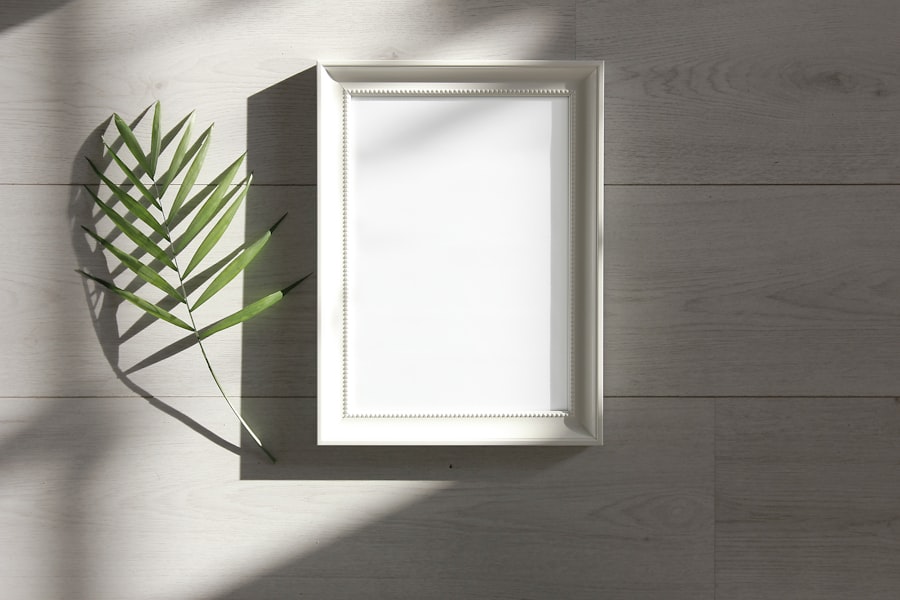Quail breeding has become increasingly popular among homesteaders and small-scale farmers due to the many benefits it offers. Quails are small birds that are relatively easy to care for and can provide a sustainable source of meat and eggs. They are also known for their fast growth and high reproductive rate, making them an ideal choice for those looking to raise their own food. Quail breeding can be a rewarding and profitable venture, whether for personal consumption or for sale to local markets.
One of the key factors in successful quail breeding is providing the birds with a suitable living environment. This is where do-it-yourself (DIY) quail breeding cages come into play. By building your own quail breeding cages, you can customize the size and design to fit your specific needs and space constraints. In this article, we will explore the benefits of DIY quail breeding cages, the materials and tools needed for construction, a step-by-step guide to building the cages, tips for maintaining them, common mistakes to avoid, and additional resources for further information.
Table of Contents
- 1 Benefits of DIY Quail Breeding Cages
- 2 Materials and Tools Needed for DIY Quail Breeding Cages
- 3 Step-by-Step Guide to Building DIY Quail Breeding Cages
- 4 Tips for Maintaining DIY Quail Breeding Cages
- 5 Common Mistakes to Avoid When Building DIY Quail Breeding Cages
- 6 Conclusion and Resources for Further Information
- 7 FAQs
- 7.1 What are quail breeding cages?
- 7.2 Why are DIY quail breeding cages popular?
- 7.3 What are the key considerations when building DIY quail breeding cages?
- 7.4 What materials are commonly used for DIY quail breeding cages?
- 7.5 Are there any specific design features to consider for DIY quail breeding cages?
- 7.6 What are the benefits of using DIY quail breeding cages?
Key Takeaways
- Quail breeding is a rewarding and cost-effective way to produce fresh eggs and meat at home.
- DIY quail breeding cages offer the benefit of customization and cost savings compared to pre-made cages.
- Materials needed for DIY quail breeding cages include wire mesh, wood, nails, and basic tools like a saw and hammer.
- Building DIY quail breeding cages involves cutting and assembling the materials, creating a secure and comfortable environment for the quails.
- Regular cleaning, proper ventilation, and providing adequate food and water are essential for maintaining DIY quail breeding cages.
Benefits of DIY Quail Breeding Cages
There are several benefits to building your own quail breeding cages rather than purchasing pre-made ones. Firstly, by constructing the cages yourself, you have the flexibility to customize the size and layout to best suit your available space and the number of quails you plan to breed. This can be particularly advantageous for those with limited space or specific requirements for their quail breeding operation.
Additionally, building your own quail breeding cages can be a cost-effective option. Purchasing pre-made cages can be expensive, especially when considering the number of cages needed for a larger-scale operation. By sourcing the materials and constructing the cages yourself, you can save money and potentially repurpose materials you already have on hand.
Furthermore, DIY quail breeding cages allow for greater control over the quality of the materials used. You can ensure that the cages are built to last and are constructed from durable, safe materials that will provide a comfortable and secure environment for your quails. This level of control over the construction process can ultimately contribute to the health and well-being of your quail flock.
Materials and Tools Needed for DIY Quail Breeding Cages
Before embarking on the construction of DIY quail breeding cages, it is important to gather all the necessary materials and tools. The specific materials required will depend on the design and size of the cages, but some common items include wire mesh or hardware cloth, wooden boards or PVC pipes for framing, hinges and latches for doors, and roofing material for protection from the elements.
In terms of tools, a staple gun or wire cutters may be needed for working with the wire mesh, while a saw and drill will be essential for cutting and assembling the wooden or PVC frame. Additionally, measuring tape, a level, and a pencil will be useful for ensuring accurate and level construction.
It is important to prioritize the safety and comfort of the quails when selecting materials for the cages. The wire mesh should be of an appropriate gauge to prevent escape and protect the birds from predators, while also allowing for adequate ventilation. The wooden or PVC frame should be sturdy and non-toxic, providing a secure structure for the cages.
Step-by-Step Guide to Building DIY Quail Breeding Cages
Building DIY quail breeding cages can be a straightforward process with careful planning and attention to detail. The following step-by-step guide provides a general overview of the construction process:
1. Design: Begin by determining the size and layout of the quail breeding cages based on the available space and the number of quails to be housed. Sketch out a design that includes dimensions for the frame, door placement, and any additional features such as nesting boxes or perches.
2. Frame Construction: Cut the wooden boards or PVC pipes to the appropriate lengths for the frame components, including sides, top, bottom, and any dividers. Assemble the frame using screws or connectors, ensuring that it is sturdy and level.
3. Wire Mesh Installation: Cut the wire mesh to fit each side of the frame, leaving excess to overlap the edges for secure attachment. Use a staple gun or wire clips to fasten the mesh to the frame, ensuring there are no gaps or loose edges that could pose a hazard to the quails.
4. Door Installation: If including a door in the design, attach hinges and a latch to one side of the frame to create a secure entry point for accessing the interior of the cage.
5. Roofing: If desired, add a roofing material such as corrugated plastic or metal to provide protection from rain and sun. Secure the roofing material to the top of the cage frame using screws or clips.
6. Finishing Touches: Add any additional features such as nesting boxes, perches, or feeders as needed based on the specific requirements of your quail breeding operation.
By following these steps and adapting them to your specific design and materials, you can construct DIY quail breeding cages that provide a safe and comfortable living environment for your quails.
Tips for Maintaining DIY Quail Breeding Cages
Once your DIY quail breeding cages are constructed and populated with quails, it is important to establish a regular maintenance routine to ensure the health and well-being of the birds. Some key tips for maintaining DIY quail breeding cages include:
1. Cleaning: Regularly clean the cages by removing soiled bedding, droppings, and any uneaten food. This will help prevent the buildup of bacteria and odors that can negatively impact the health of the quails.
2. Inspections: Conduct routine inspections of the cages to check for signs of wear or damage, as well as any potential hazards such as loose wire or sharp edges. Address any issues promptly to maintain a safe environment for the quails.
3. Ventilation: Ensure that the cages have adequate ventilation to prevent heat buildup and maintain air quality. This may involve adjusting the positioning of the cages or adding additional ventilation openings if necessary.
4. Pest Control: Implement measures to control pests such as flies, mites, or rodents that can pose a threat to the quails. This may include using natural deterrents or regularly cleaning and disinfecting the cages.
5. Health Monitoring: Keep a close eye on the health of the quails by observing their behavior and appearance. Any signs of illness or injury should be addressed promptly with appropriate veterinary care.
By incorporating these maintenance tips into your routine, you can help ensure that your DIY quail breeding cages provide a safe and healthy environment for your quails to thrive.
Common Mistakes to Avoid When Building DIY Quail Breeding Cages

While building DIY quail breeding cages can be a rewarding endeavor, there are some common mistakes that should be avoided to ensure successful construction and functionality. Some of these mistakes include:
1. Inadequate Size: Building cages that are too small can lead to overcrowding and stress among the quails. It is important to consider the space requirements for each bird and provide ample room for movement and nesting.
2. Poor Ventilation: Insufficient ventilation can result in poor air quality within the cages, leading to respiratory issues for the quails. Ensure that there are adequate openings for air circulation while still providing protection from drafts.
3. Weak Construction: Using flimsy materials or improper construction techniques can result in weak or unstable cages that may pose a safety risk for the quails. It is important to prioritize durability and structural integrity during construction.
4. Lack of Security: Failing to secure doors or openings properly can result in escapes or predator access to the cages. Double-check that all closures are secure and free from gaps that could compromise security.
5. Neglecting Maintenance: Once constructed, it is essential to maintain regular cleaning and inspections of the cages to ensure they remain in good condition. Neglecting maintenance can lead to deterioration of the cages over time.
By being mindful of these common mistakes and taking proactive measures to avoid them, you can increase the likelihood of successful DIY quail breeding cage construction and long-term functionality.
Conclusion and Resources for Further Information
In conclusion, DIY quail breeding cages offer numerous benefits including customization, cost-effectiveness, and quality control over materials. By following a step-by-step construction process and implementing maintenance tips while avoiding common mistakes, you can create a safe and comfortable living environment for your quails.
For further information on DIY quail breeding cage construction and maintenance, there are numerous resources available including online tutorials, books on poultry farming, and forums where experienced breeders share their insights and advice. Additionally, local agricultural extension offices or poultry associations may offer workshops or educational materials on quail breeding best practices.
With careful planning, attention to detail, and ongoing care, DIY quail breeding cages can contribute to a successful and sustainable quail breeding operation that provides a valuable source of meat and eggs for personal consumption or sale within local markets.
If you’re interested in quail breeding cages DIY, you might also want to check out this article on creating a custom chicken coop from a shed on PoultryWizard’s website. The article provides valuable insights and tips on converting a shed into a functional and comfortable chicken coop, which could offer some inspiration for your quail breeding setup. You can read the full article here.
FAQs
What are quail breeding cages?
Quail breeding cages are specially designed enclosures used for housing and breeding quail. These cages are typically equipped with features that provide a suitable environment for quail to lay eggs, incubate them, and rear their young.
Why are DIY quail breeding cages popular?
DIY quail breeding cages are popular because they allow quail breeders to customize the cages according to their specific needs and space constraints. Additionally, building your own cages can be a cost-effective alternative to purchasing pre-made cages.
What are the key considerations when building DIY quail breeding cages?
When building DIY quail breeding cages, it’s important to consider factors such as cage size, ventilation, material durability, ease of cleaning, and accessibility for feeding and egg collection. Additionally, the cages should be designed to provide a comfortable and safe environment for the quail.
What materials are commonly used for DIY quail breeding cages?
Common materials used for DIY quail breeding cages include wire mesh, wood, PVC pipes, and metal frames. These materials are chosen for their durability, ease of cleaning, and ability to provide adequate ventilation for the quail.
Are there any specific design features to consider for DIY quail breeding cages?
Some important design features to consider for DIY quail breeding cages include removable trays for easy cleaning, nesting boxes for egg laying, perches for the quail to roost on, and a secure door or access point for handling the quail.
What are the benefits of using DIY quail breeding cages?
Using DIY quail breeding cages allows breeders to have full control over the design and functionality of the cages. It also provides a cost-effective option for those looking to start or expand their quail breeding operation. Additionally, DIY cages can be tailored to fit specific space requirements.
Meet Walter, the feathered-friend fanatic of Florida! Nestled in the sunshine state, Walter struts through life with his feathered companions, clucking his way to happiness. With a coop that’s fancier than a five-star hotel, he’s the Don Juan of the chicken world. When he’s not teaching his hens to do the cha-cha, you’ll find him in a heated debate with his prized rooster, Sir Clucks-a-Lot. Walter’s poultry passion is no yolk; he’s the sunny-side-up guy you never knew you needed in your flock of friends!







